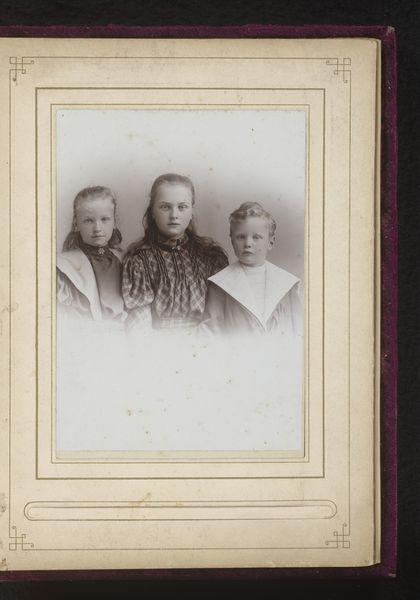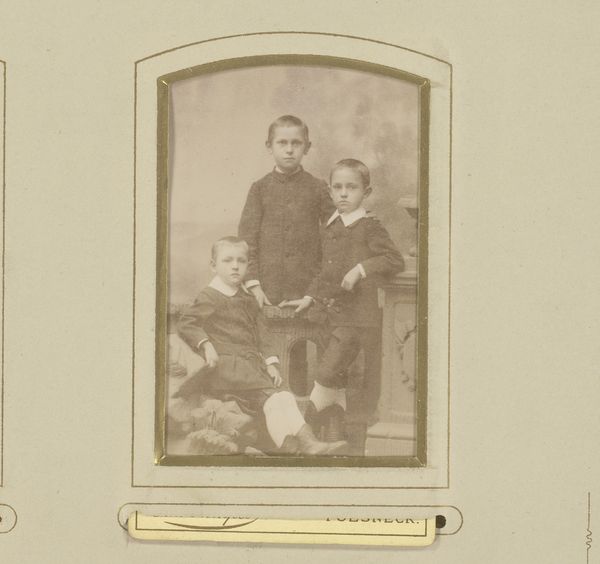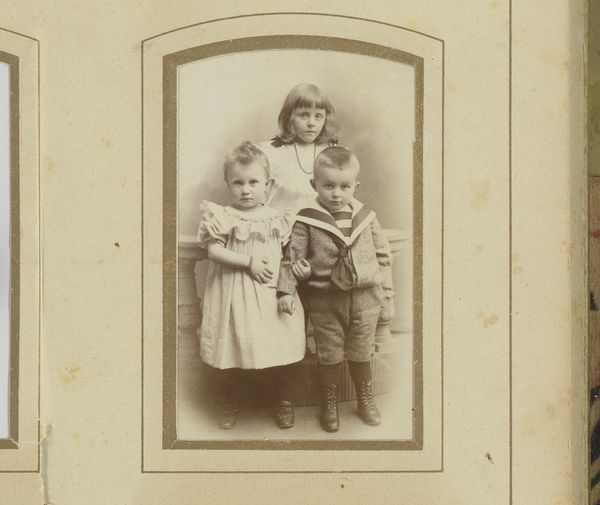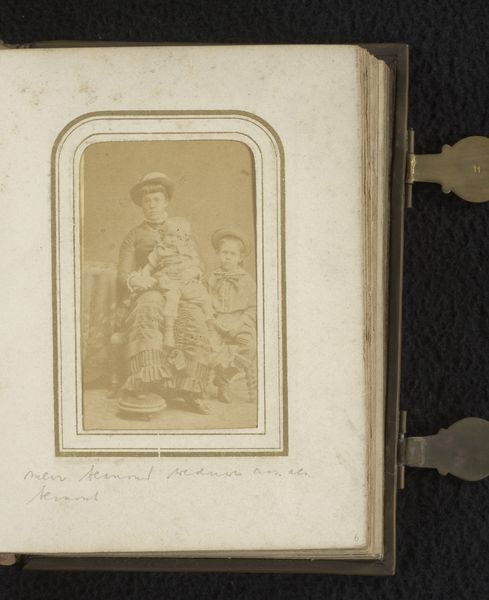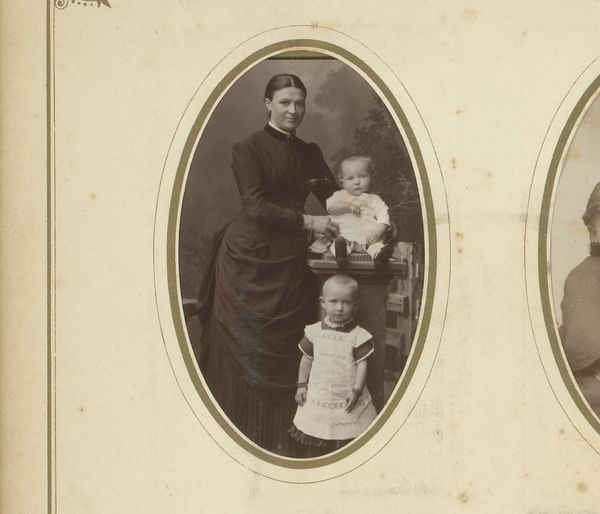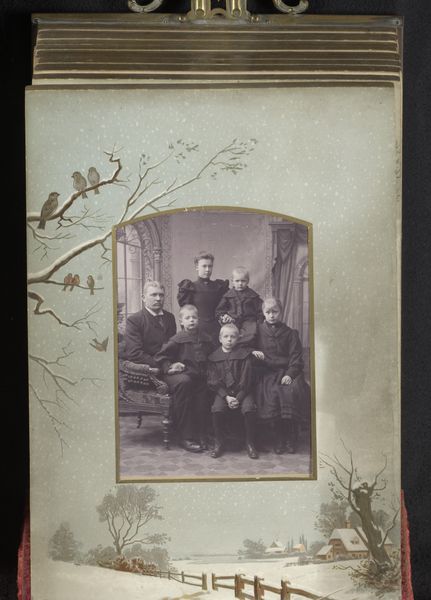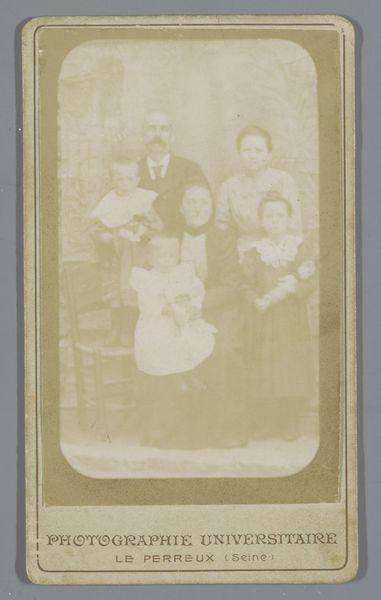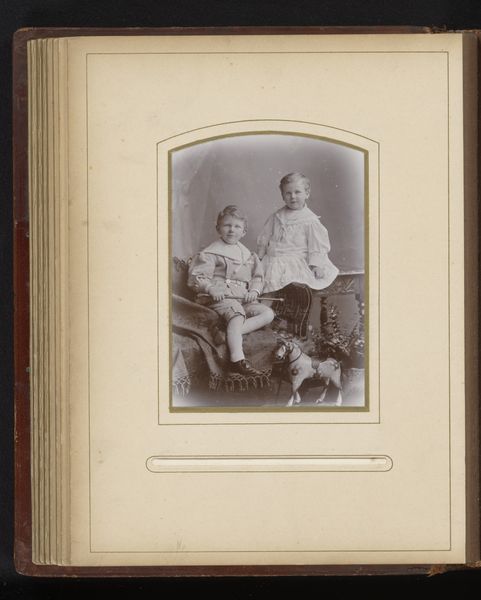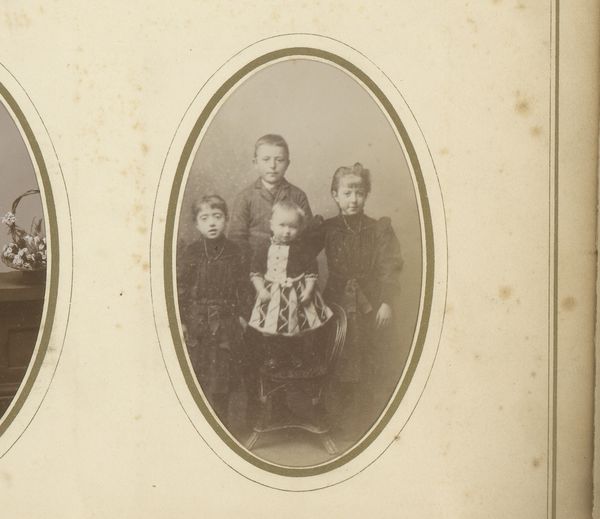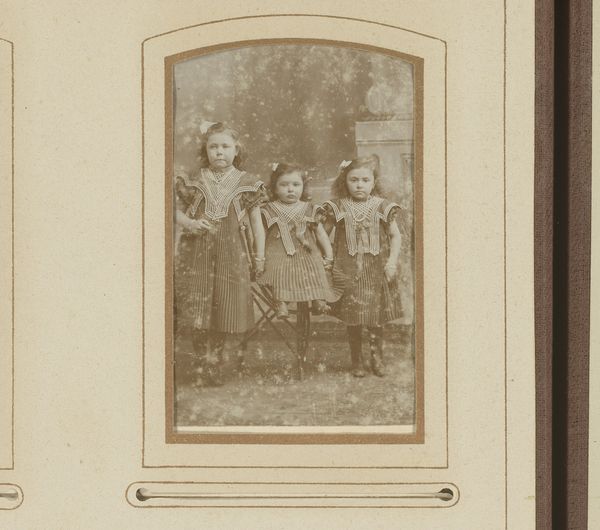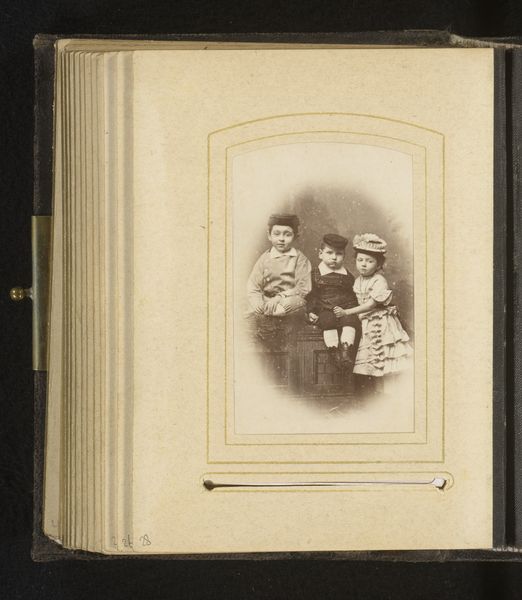
photography
#
beige
#
portrait
#
aged paper
#
toned paper
#
earth tone
#
neo-impressionism
#
photography
#
brown and beige
#
home decor
#
warm-toned
#
neutral brown palette
#
cardboard
#
genre-painting
#
academic-art
#
brown colour palette
#
realism
Dimensions: height 84 mm, width 51 mm
Copyright: Rijks Museum: Open Domain
Curator: Welcome! Today, we're exploring Machiel Hendricus Laddé's "Portret van vier jongens," a photograph dating from around 1892 to 1906, currently housed at the Rijksmuseum. Editor: My first impression? An air of sternness. Even with soft, diffused light, there's something profoundly unsmiling and reserved about these children. Curator: Indeed. Let’s look at the formal arrangement. The composition is strikingly symmetrical. The four boys are posed to create a pyramidal structure, anchored by the tallest figure at the apex. Laddé utilizes a limited, earthy palette: sepia tones dominate, imbuing the piece with a sense of nostalgia and timelessness. Editor: And what does that pyramid represent? Are we intended to think about social hierarchy? Childhood itself feels constructed here. What's fascinating is how Laddé, likely commissioned by the family, captured these children at a time of rapidly shifting ideas about youth and innocence in Western culture. The clothes constrict, they're miniatures of adult tailoring, there's not a speck of mud in sight! Curator: I think your emphasis is more on context. Focusing just on the surface elements, the light gently caresses their faces, highlighting the nuances of each boy's expression and bone structure. Note the meticulous detail in their clothing. Editor: Details designed to signify class, certainly! Perhaps we are meant to contemplate childhood as performance – are they proxies of power? Looking at their bland uniformity in their expressions I wonder whether photography at the time gave agency at all. Curator: Agency perhaps is something we can give in our modern day retrospective analyses of art like these! Despite all the interpretations one can apply to "Portret van vier jongens", I must admire its elegant tonality that communicates certain stillness. Editor: And, for me, the very stillness you're talking about, is evocative of its time, an insight into the relationship between the emerging middle classes and power, posing and portraits. Thanks to artworks like these, the image lives on in history!
Comments
No comments
Be the first to comment and join the conversation on the ultimate creative platform.
